-
构造函数。。
查看全部 -
// 使用new关键字,实例化对象 Student *str = new Student; // 设置对象的数据成员 str->setName("慕课网"); // 使用cout打印对象str的数据成员 cout << str->getName() <<endl; // 将对象str的内存释放,并将其置空 delete str; str = NULL; return 0;不要漏掉str->getName()后的 () ;
str 是 Student 类型的,所以申请的内存类型也是 Student ;
str 是 Student 类型而非 数组 ,所以不可以用 delete []str ;
查看全部 -
string查看全部
-
string
查看全部 -
当初始化的数据为const类型的时候,初始化列表存在就很有必要性
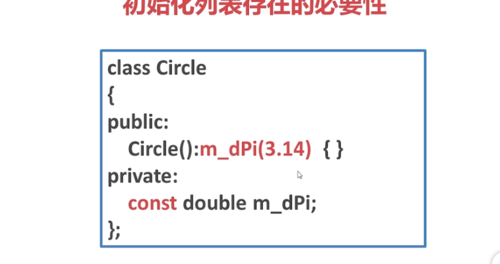 查看全部
查看全部 -
类内定义与内联函数:
关于内联函数:
关键字:inline
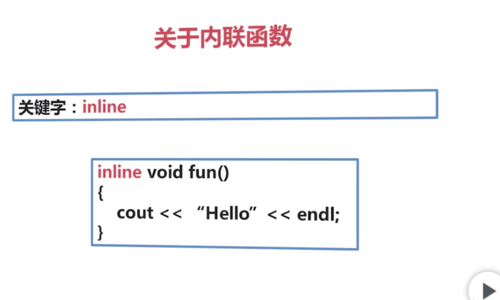
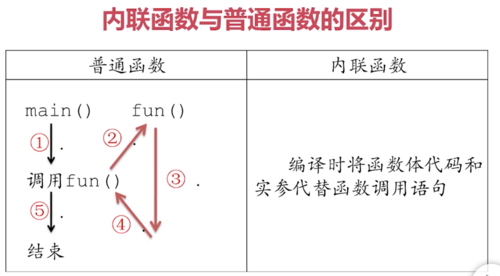
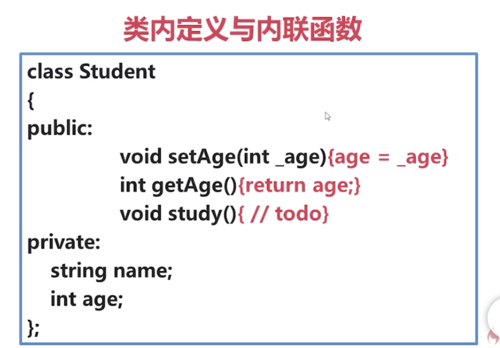 查看全部
查看全部 -
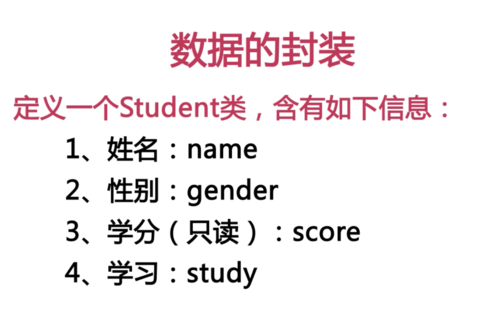
#include <iostream> #include <stdlib.h> #include <string> using namespace std; //数据成员命名规则:m_数据类型+名字,这样看到就知道它是定义在类里面的数据成员了 class Student{ public: void setName(string _name){ m_strName = _name; } string getName(){ return m_strName; } void setGender(string _gender){ m_strGender = _gender; } string getGender(){ return m_strGender; } int getScore(){ return m_iScore; } void initScore(){ m_iScore = 0; } void study(int _score){ m_iScore += _score; } private: string m_strName; string m_strGender; int m_iScore; } int main(){ //实例化累的对象 Student stu; stu.initScore();//需要初始化 stu.setName("zhangsan"); stu.setGender("女"); stu.study(5); stu.study(3); cout<<stu.getName()<<" "<<stu.getGender()<<" "<<stu.getScore()<<endl; return 0; }查看全部 -
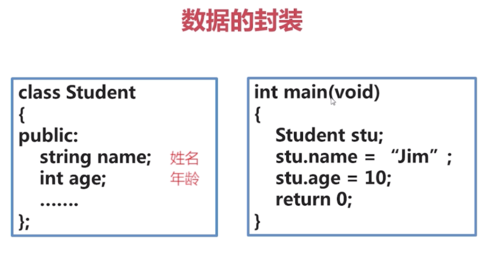
上例违背了面向对象的思想。
面向对象的基本思想:

封装的好处:
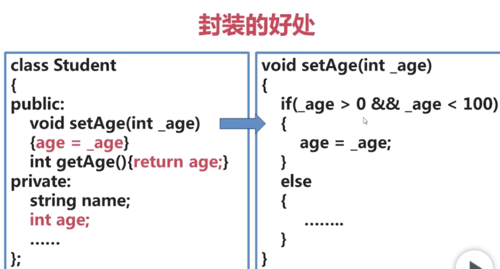
希望成员变量只能被外界读取,而不被外界改变:
 查看全部
查看全部 -
#include <iostream> #include <stdlib.h> #include <string> using namespace std; int main(){ string name; cout<<"Please input your name:"; //不能简单使用cin,因为要判断是否为空 getline(cin,name);//若输入的是一个空串,则给cin空串若非空,也给cin if(name.empty()){//是回车 cout<<"input is null.."<<endl; system("pause"); return 0; } //字符串的对比 if(name == "imooc"){ cout<<"you are a administrator"<<endl; } //注意理解记忆 cout<<"hello"+name<<endl; //cout<<"your name length:"+name.size()<<endl; //有问题是因为前为字符串后不为字符串,连接不能用+,用<< cout<<"your name length:"<<name.size()<<endl; cout<<"your name first letter is:"<<name[0]<<endl;//因为name[0]是一个char不用用+号 return 0; }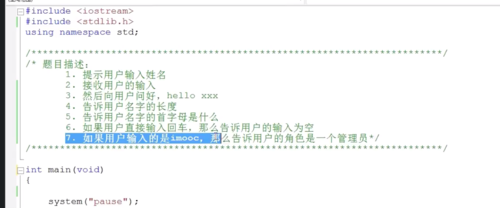 查看全部
查看全部 -
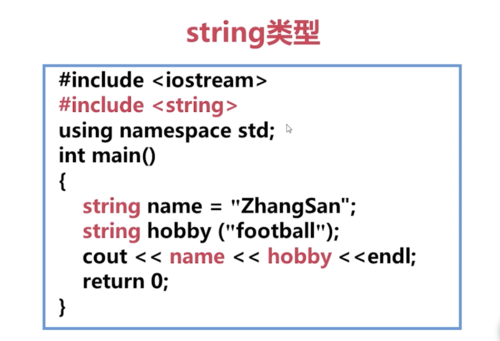
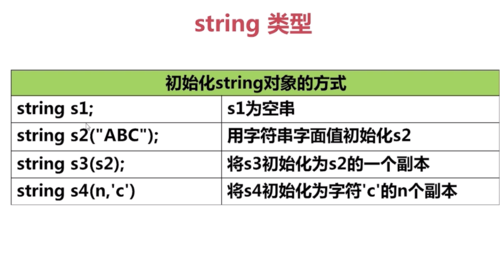
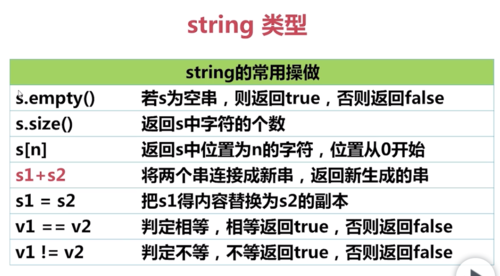
可以不再使用众多str的函数。需要注意s1+s2.
 查看全部
查看全部 -
#include <iostream> #include <stdlib.h> using namespace std; class Coordinate{ public: int x; int y; void printX(){ cout<<x<<endl; } void printY(){ cout<<y<<endl; } }; int main(){ //在栈中定一个对象 Coordinate coor; coor.x = 10; coor.y = 20; coor.printX(); coor.printY(); //在堆中实例化一个对象 Coordinate *p = new Coordinate(); //容易忘记判断 if(NULL == p){ //failed; return 0; } p->x = 30; p->y = 40; p->printX(); p->printY(); //容易忘 delete p; p = NULL; system("pause"); return 0; }查看全部 -
对象成员的访问:
分为通过栈、堆实例化对象(下例是单一对象):
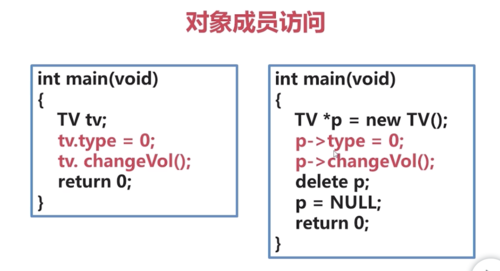
若是对象数组:
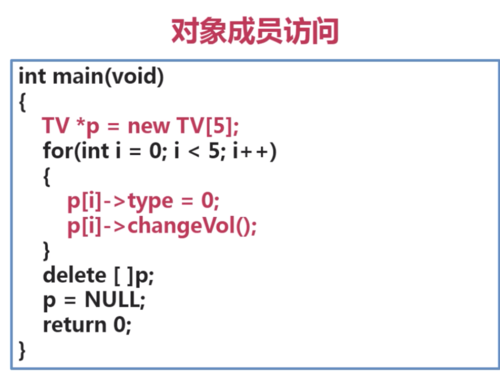 查看全部
查看全部 -
对象实例化,类是一个模板
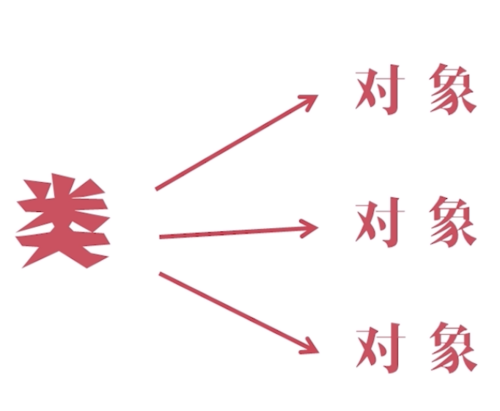
实例化类有两种方式:从栈实例化、从堆实例化
从栈实例化:
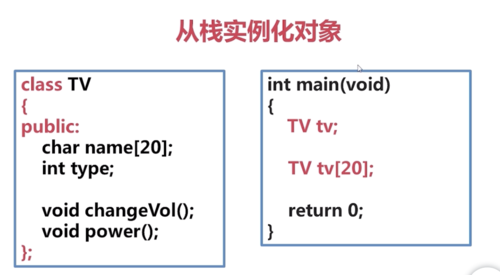
从堆中实例化:
int main(){ TV *p = new TV();//new运算符申请出来的运算符就是在堆上 TV *q = new TV[20]; //todo delete p; delete []q; return 0; }查看全部 -
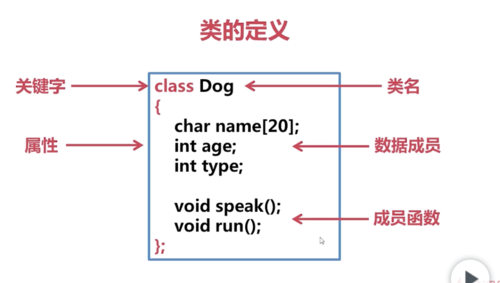
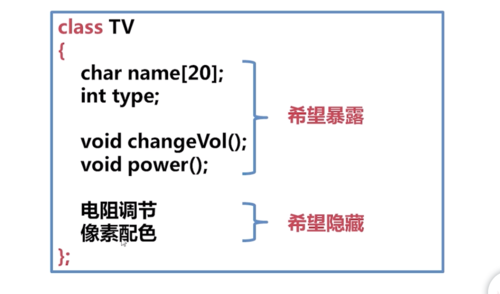
如何把想显示的东西暴露,把想隐藏的东西隐藏:访问限定符
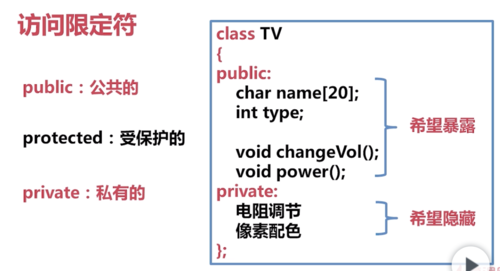
对象是具体的事物,而类是从多个对象中抽象出来的。
查看全部 -
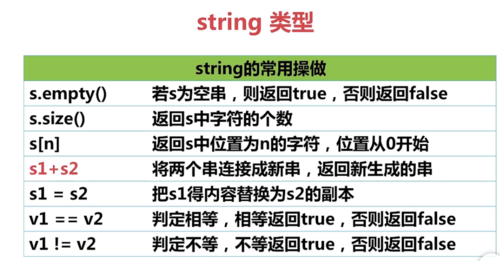 字符串的常用操作查看全部
字符串的常用操作查看全部
举报
0/150
提交
取消




